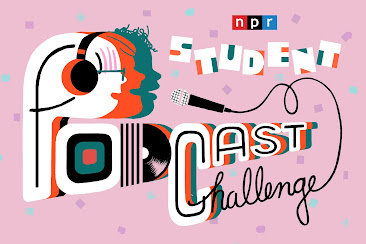Week 4 Blog Post Virtual Field Trips & Zoom
What exactly are virtual field trips? Virtual field trips offer digital explorations of the outside world through images, videos, audio clips, etc. These trips allow students the opportunity to explore and see places, things, and people that are not normally seen in the classroom. Per the Professional Learning Board (n.d.), "the success of virtual field trips often depends on how well the trip has been planed." The planning process is as follows:
1.) Conduct Research
- explore the field trip before your students. Look for creative, accessible and engaging trips to enhance lesson plans.
2.) Lesson Plan
- Align the field trip with a specific lesson or objective that students are studying
3.) Design Assessments
- Teachers should design assessment modules to evaluate how much their students have learned while on the trip: pre-trip, during-the-trip. and post-trip.
1.) Pre-trip: Teachers should explain what is expected before, during, and after the trip. Students should have a clear understanding of what is expected and the learning objective is while on the trip.
2.) During-the-trip: teachers should observe students while they are on the trip to gather a true representation of whether students are following directions and working towards the learning objective.
3.) Post-trip: Teachers should conduct an assessment to determine what students have learned while on the trip.
4.) Secure Permission
- Inform parents and school authorities about the trip
I did not quite realize the many steps of planning a virtual field trip. I did well at conducting research and designing assessments, but in the future I may want to lesson plan a little better for my students. I did not set a strict objective when I created my virtual field trip and I now realize that students must be working towards a specific learning objective. While virtual field trips are fun, students must still learn something from the trip.
Lastly, I'd like to talk about logistically impossible experiences can now be possible for our student learners. Virtual field trips have the ability to take students beyond the classroom. I loved watching the Skye video this week. This video allowed students to visit the bottom of the ocean just by being on Skype with someone who works and lives under water. Students were able to ask the guest questions and connect to the outside world all by using Technology. (Hmmm... I didn't think about that when we first talked about Technology a couple of weeks back). Students can now attend places that are miles and miles away just by teachers utilizing virtual field trips in the classroom. In opinion, these trips will be great for my future students.
p.s. I would loved to find out other ways to conduct virtual field trips. (What sites are good for field trips, how is it possible to set up zoom/skype calls, etc.)
References:
https://k12teacherstaffdevelopment.com/tlb/one-stop-guide-to-planning-a-virtual-field-trip/
https://www.youtube.com/watch?v=xzBf_J0dvyU


Great, thorough post and reflection on planning virtual field trips and expert visits. Objectives are super important and are often the first thing I look at when evaluating my students' written lesson plans.
ReplyDeleteTo address your question at the end of the post, a lot of it has to do with your networking with various locations, groups, and experts. Sometimes, just reaching out to others in your personal learning network is a good place to start. For example, I send out a post or tweet when I am looking for specific guest representation on my podcast and that tends to work pretty well.